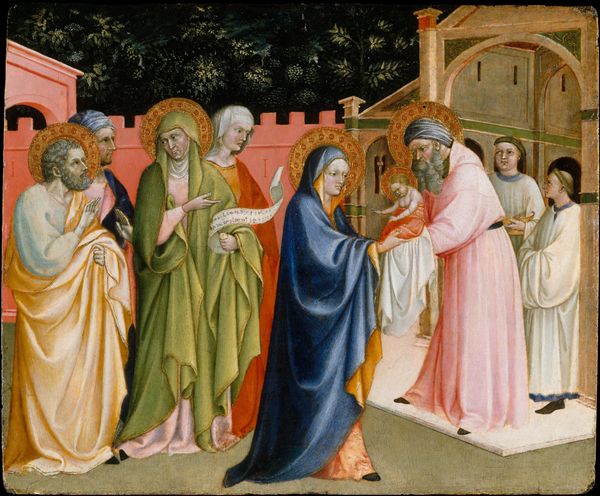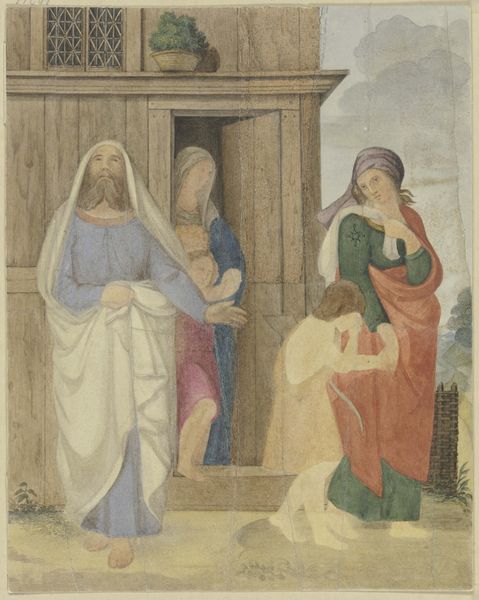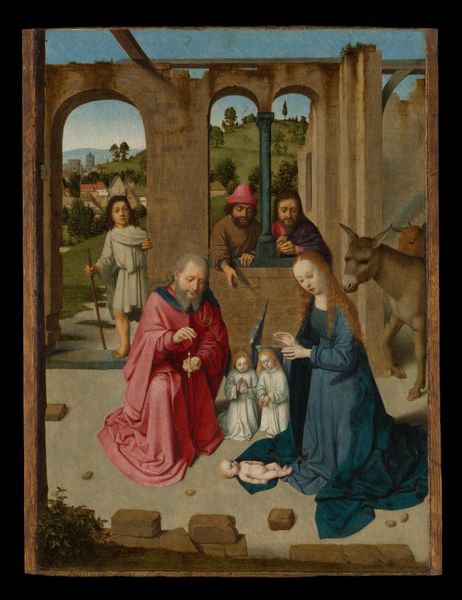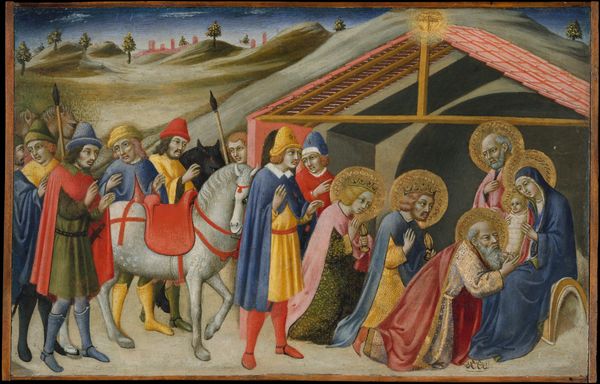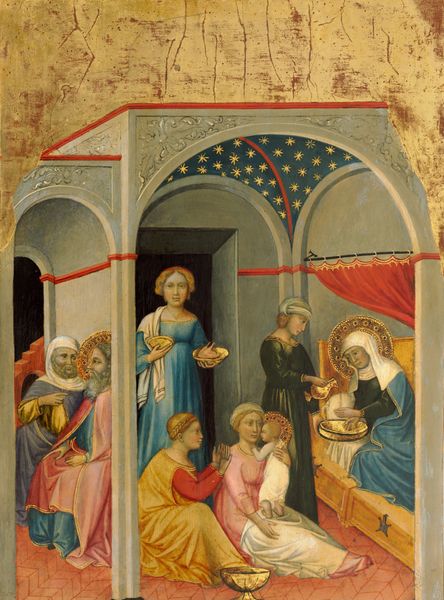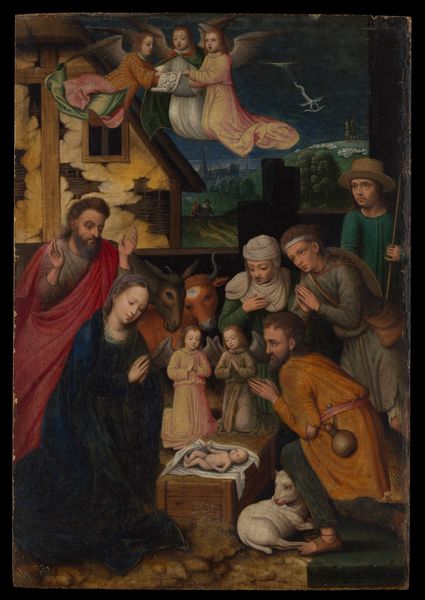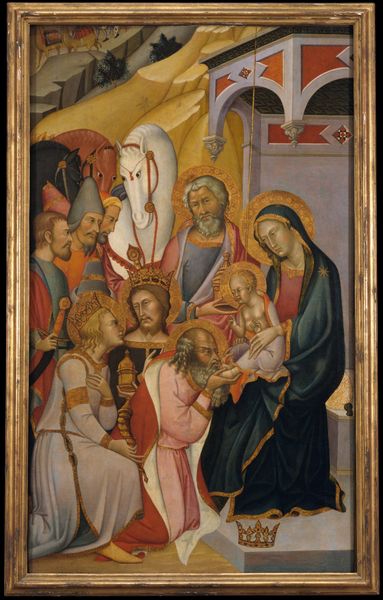
The Adoration of the Magi 1455 - 1465
0:00
0:00
tempera, painting
#
narrative-art
#
tempera
#
painting
#
landscape
#
figuration
#
oil painting
#
history-painting
#
italian-renaissance
#
virgin-mary
#
christ
Dimensions: 10 5/8 x 9 1/8 in. (27 x 23.2 cm)
Copyright: Public Domain
Giovanni di Paolo painted this small panel of ‘The Adoration of the Magi’ in the 15th century, probably in his native Siena. The cultural and institutional context in which the painting was made is key to understanding it. Here, the biblical story is translated into the visual language of Renaissance Italy. We see Mary and the Christ Child venerated by the three kings who kneel to offer their gifts. The painting would likely have been commissioned for a private devotional space within a wealthy household. The composition, with its flattened perspective and lavish use of gold leaf, serves a didactic purpose – it was made to teach Christian doctrine to its viewers and to promote pious devotion. But we can also see a particular set of social relations in the hierarchy of figures, in the wealth displayed in the kings’ garments, and even in the presence of the animals and the shepherd in the background. By studying such things as patronage records, religious texts, and social histories, we can better understand the cultural values embedded within this artwork. The task of the historian is to excavate these meanings to understand the role art plays in society.
Comments
No comments
Be the first to comment and join the conversation on the ultimate creative platform.
